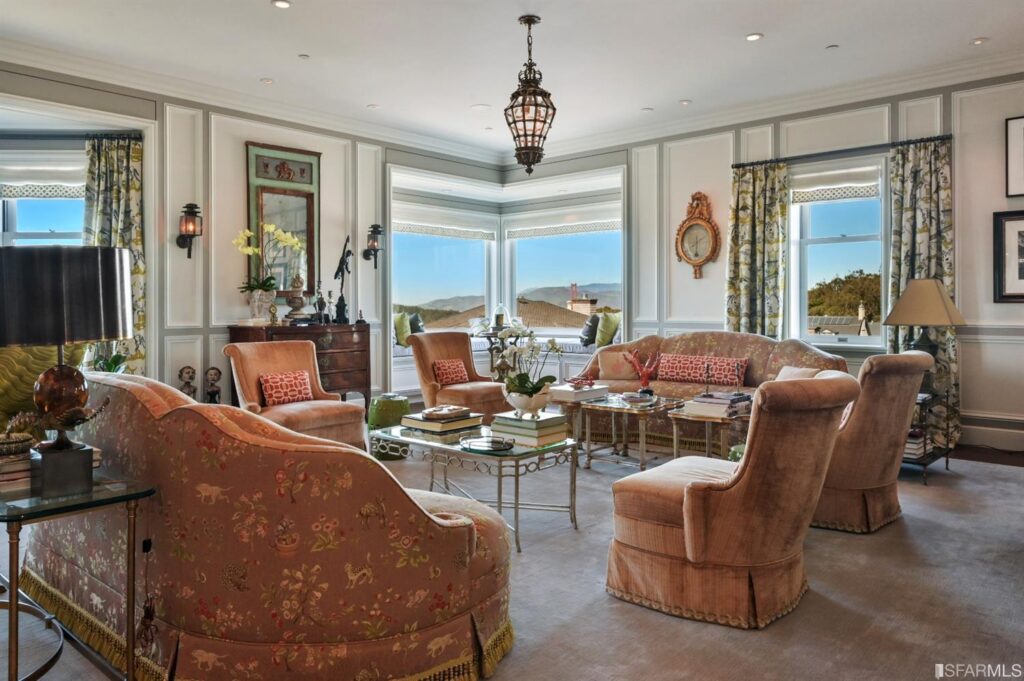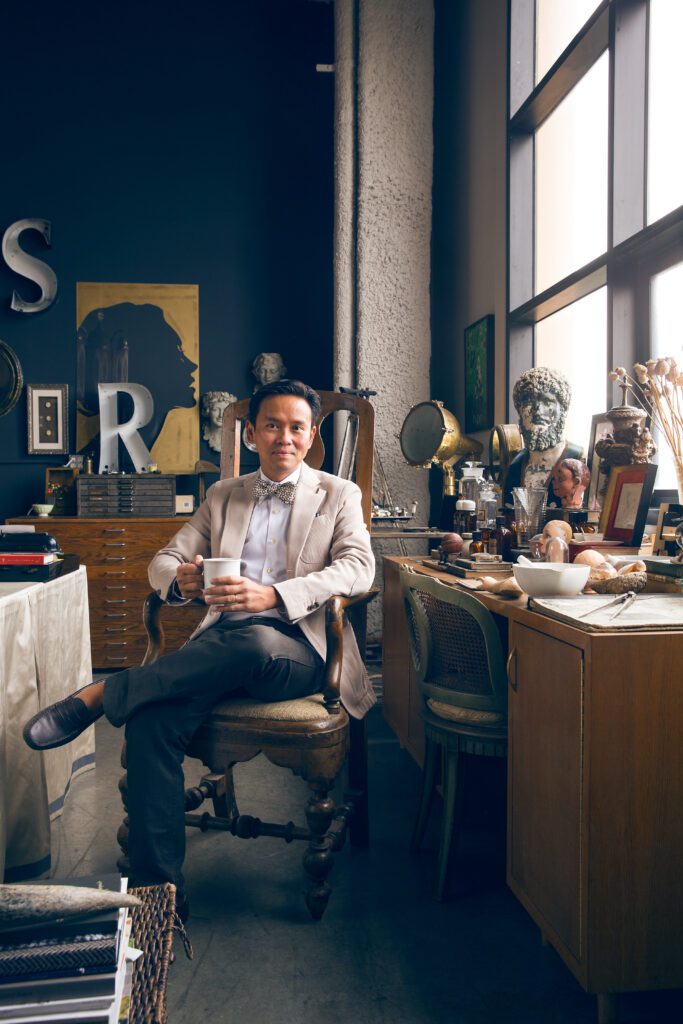A multi-hyphened creative, interior designer, event planner to the elite, renowned dapper dresser, owner of Jonathan Rachman Designs, and maven of style and grace, Rachman now adds author to his repertoire with the release of his memoir, The Garlic Peanut Story.

He loves Hubert de Givenchy for his timeless, romantic design, Christian Dior for his elegant simplicity, and fabled artist and stage designer Oliver Messel for his versatility, multiple talents, and adaptability. In a way, San Francisco’s Jonathan Rachman is the sum of all of his heroes and more. A multi-hyphened creative, interior designer, event planner to the elite, renowned dapper dresser, owner of Jonathan Rachman Designs, and maven of style and grace, Rachman now adds author to his repertoire with the release of his memoir, The Garlic Peanut Story. From floral designs for Marc Jacobs to work for the Four Seasons to countless homes in myriad global spots, he’s done it all. During the pandemic, he’s been busier than ever, not just writing, but re-imagining and renovating homes (“I believe this era has helped people to recognize how valuable it is to have a home that is highly customized to their needs,”) and reflecting on his life and the “power of love and forgiveness,” a major theme in his new book. We sat down to talk with him about his book, get his fashion tips, and discuss his design aesthetic.
HL: Let’s start with you book. In The Garlic Peanut Story you express gratitude for a sister whose love sustained you through a painful childhood in Indonesia. You felt you were born different and that took a toll. In this book, you pay homage to the many people who supported you with kindness and good counsel.
JR: You’ll learn a lot about me here. I believe in the power of love and forgiveness. Though my glamorous, peppy façade is real, beneath it was a sad, tortured, island boy. But, oh, how my life was saved by so, so many men and women.
HL: You don’t follow trends. Your acclaimed fashion sense is intuitive. One thing that drives it is the motivation to be considerate of others. For you, that means dressing appropriately for all events, whether on a flight or at the opera. Can you share some tips?
JR: I think it is important to be respectful no matter where you are—one must know how to dress for each place, event, and location. To be underdressed (or overdressed) can be a sign of disrespect. Chic and comfortable clothing is achievable. Layers are a favorite solution. Let me tell you about some of my favorites. Go with Thom Browne, Sacoor Brothers, or El Ganso for crisp, tailored jackets made with comfortable materials. Choose Ermenegildo Zegna for the best, breathable outer coat. Brooks Brothers, J. Crew, and Petronio of Bergamo do wonderful white or gingham shirts for a dashing, everyday look. And don’t forget Tod’s and Sacoor Brothers for driving shoes. They make them comfy and luxurious, yet comfortable—and so easy to change during “takeoff and landing” or from “slippers to socks.”

HL: Regarding interior design, you never received formal education, but rather trained in fashion and hospitality management in Switzerland. These two areas influence your self-proclaimed romantic style, a dedicated look of elegance and ease. Also, you love color, but you say it is very subjective. Can you explain that?
JR: Yes. For example, I personally love my bedroom to be more neutral, as I find bold and bright colors distracting when I want to relax. On the other hand, I absolutely love bold bright colors in my entertainment area (formal living or dining), and I prefer cool hues for my bathrooms, especially when I am designing in the tropical part of the world. Everyone is different!
HL: What do you see happening in San Francisco homes in 2021? How did 2020 spur these changes?
JR: Because I never follow trends, I can only speak from my experience. In the 20 years of my design career, I have never been this busy in our firm. We have had so many requests in full renovations, expansions, or partial renovations, as well as clients acquiring more properties, at times simultaneously. I believe, because of the pandemic, people are realizing the value of customized homes.
HL: Do you think that interior design is a form of fashion?
JR: Yes, design, like fashion, has various levels of formality and complexity. In fashion, there is the haute couture, prêt-à-porter, streetwear, beachwear, etc. It is the same in interior design. A historical mansion in Paris has different architecture and style than a beach house in Bali or a penthouse in a London high-rise. Within the property itself, there must be a hierarchy—for example, the master suite must be fancier than the nursery or the guest room and so on. In consulting for fashion or design, as well, one must understand the level of fashion as well as interior design to achieve just the right “fashion” or interior for the individual or owner. In fashion, there is the pattern, in interior design there is the floor and furniture plan: each will always guide us to the final result. As in fashion, interiors should be appropriate, too.
HL: What’s next for you?
JR: My first monograph! A coffee table design book, published by Flammarions and co-authored and edited by the one and only Dean Rhys-Morgan, will be out the end of this year. I hope I can have launch parties globally next year. See you there!
HL: Where can we buy The Garlic Peanut Story? We can’t wait!
JR: You can get on my website and Amazon.
